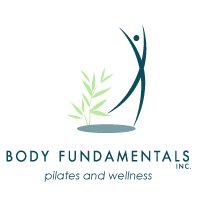Recovering from an Injury #4
 The Lesson in Taking the Time It Takes
The Lesson in Taking the Time It Takes
“Appearance is absolute, but reality is not that way.
Everything is interdependent, not absolute.” Dalai Lama
Taking Charge: Self-Guided Recovery
To be pain-free is often confused with being ready to pick up right where you left off. The problem is that athletic skills require a commensurate level of strength to execute without injury. Strength builds in increments. Nobody wants to start over when they graduated years ago! What you believe you can do is indeed what causes everything to change—and sometimes not for the better if the reality of an appropriate starting point is ignored.
Say, for example, you could ride a bike for more than an hour before one knee started hurting so badly you could not ride at all. You have no clue what happened or what you did that caused this problem. The first order of business is to review or rule out possible issues including, but not limited to, the following:
• Proper adjustment and fit for all gear
• Dietary cause of inflammation such as allergy or excessive sugar intake
• Joint injury requiring surgical intervention
• Muscular imbalance
• Improper technique
• Genetic predispositions and conformation factors
• Overtraining or inadequate rest
Get the help and advice necessary to make informed decisions. Talk with people who’ve been through something similar as well as professionals. Your network plays a major role in long term fitness and health. If cross training is indicated to build a better foundation, go for it. This is a pay now, or pay dearly later, life moment. Knees and shoulders are missed once they are gone.
Assuming all of the aforementioned have been either ruled out or confirmed and corrective action taken, a great plan for the first solo ride on the bike might be slowly spinning for 5 minutes in front of a mirror to watch alignment, going both forward and backward. Then a wait to see what happens. No news is good news since that means you get to do it again instead of wait even longer for new pain to go away. More is not better. It is just more. The lesson of increments means to work smarter rather than harder.
To keep moving forward is to quit while you are ahead; that means to stop on a good one instead of pushing into fatigue. Hold the belief that smart work will continue the upward trend. Use the rear view in this instance for a quick survey to establish progress and perspective. A relative progress check is a one to two-week previous comparative, and the perspective check is 2-4 months back depending on the nature of the injury. Absent pain, the finding of no progress is a red flag that indicates a consult or program revision is necessary. No more and no less.
Doing just enough is the key. Being willing to discover what just enough means for you as an individual is the tipping point of reclaiming active health.
